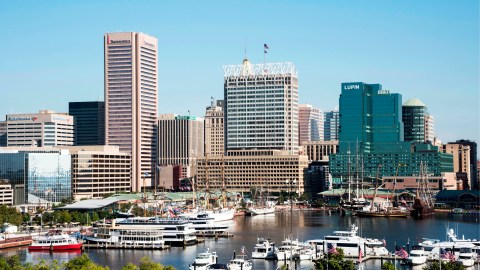A U.S. City is Practically Begging to Accept More Refugees

The Obama administration has committed to welcoming at least 10,000 Syrian refugees to the United States in 2016. The city of Baltimore has lost one-third of its population since 1950 and is struggling to attract new families in the wake of the Freddie Gray protests. You can probably guess where this is going.
Beverly Hills, it ain’t. But Baltimore is a whole lot better than Homs, and it’s one of the only U.S. cities with elected officials who are extremely eager to open the gates to Middle East refugees. Mayor Stephanie Rawlings-Blake, who last year established an Office of Immigrant and Multicultural Affairs, has gone on the record stating her dedication to making Baltimore among America’s most accessible cities for refugees, mostly through homebuyer grants and by easing them through the bureaucratic process:
“We are certainly supportive of refugees from Syria coming to Baltimore; this speaks to our deepest values as Americans. Baltimore City has been and will continue to be a beacon of freedom and opportunity for refugees seeking a home to grow and prosper.”
Poet and musical artist Saul Williams speaks on the many societal benefits of diversity and inclusion.
Baltimore or Less
Why is Rawlings-Blake so gung-ho about welcoming refugees to her city? We can certainly choose to take her words at face value: It may very well be a matter of doing the right thing.
Of course there’s also this: Baltimore was one of the country’s top 10 most populous cities from the country’s inception through the 1970s, when dried-up industry and white-flight mentality spurred a major flow of emigration. By 2010, it ranked 23rd. In 2020, it could fall out of the top 30 completely.
Fewer residents means less tax revenue. Less tax revenue means blight and crumbling infrastructure. Economic decline sets in. Buildings remain empty. Opportunity vanishes. Crime rises.
It doesn’t help that Baltimore’s been a civic PR disaster over the past decade. The city’s public image has been defined by race issues, riots, and drugs (it’s never a good thing when your city’s unofficial motto is “where The Wire was set”). While cities like Pittsburgh have found ways to reinvent themselves in the post-industrial Northeast, Baltimore has spun its wheels searching for a new identity.
The thought of several thousand asylum-seekers moving in and going wacko for (Joe) Flacco has got to bring excitement to city officials anxious to move past Gray and toward a brighter future by the bay.
—
Robert Montenegro is a writer, playwright, and dramaturg who lives in Washington DC. His beats include the following: tech, history, sports, geography, culture, and whatever Elon Musk has said on Twitter over the past couple days. He is a graduate of Loyola Marymount University in Los Angeles.You can follow him on Twitter at @Monteneggroll and visit his po’dunk website at robertmontenegro.com.
Read more at The Economist
Photo: JEFF HAYNES/AFP/Getty Image





